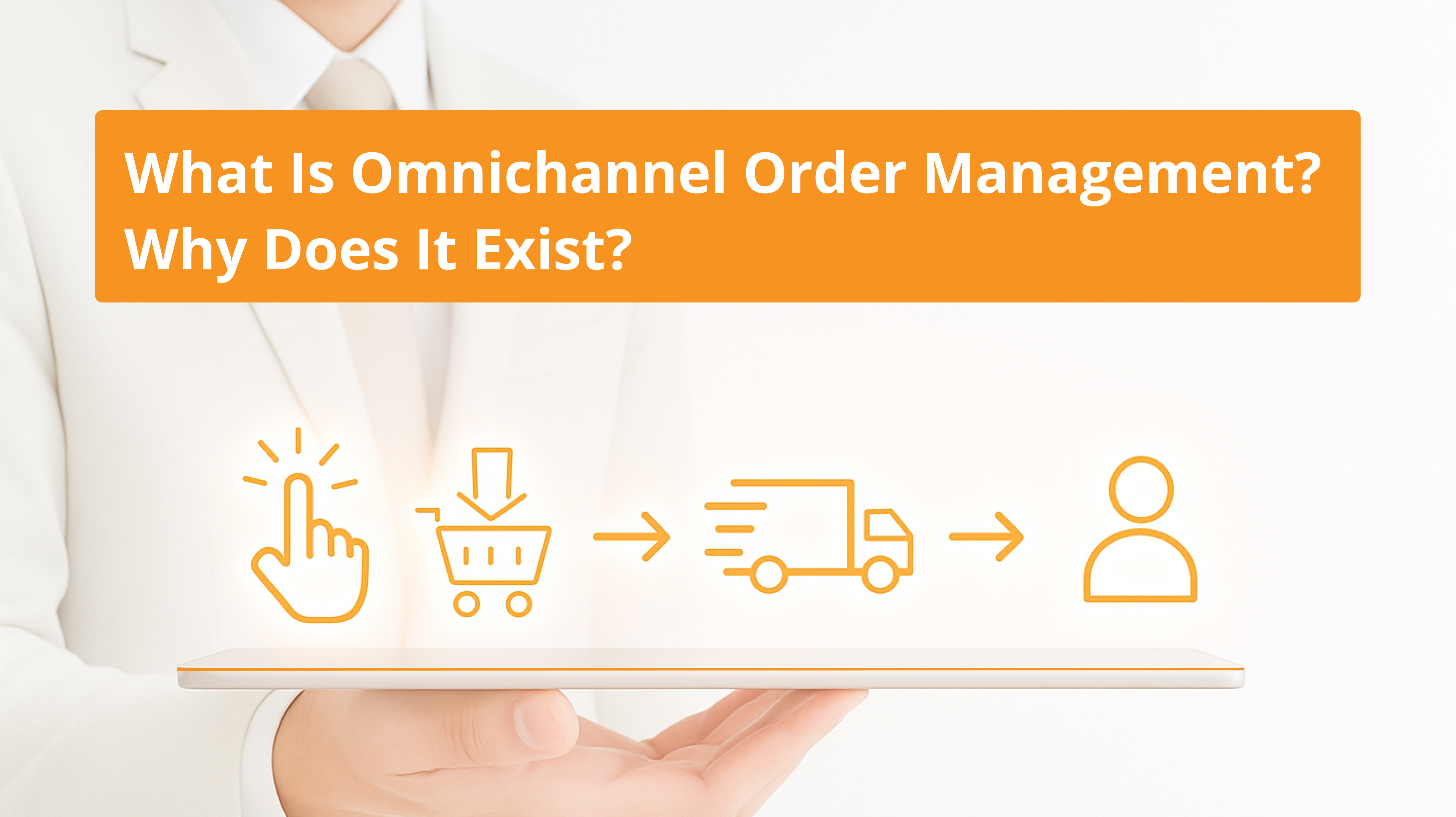For years, eCommerce and point of sale (POS) systems managed their respective retail mediums with little cross-channel communication. But faced with shifting customer expectations and monumental advancements in technology, the retail market’s answer was omnichannel: integrating all online and in-person channels to offer customers the seamless shopping experience they now expect.
Unfortunately, omnichannel retailers trying to integrate traditional eCommerce and POS systems faced an uphill battle. Attempts to combine these distinct systems caused tensions and bottlenecks because they were forced to negotiate for inventory in real-time, a function that neither software historically had to consider.
Today, the omnichannel Order Management System has become the indispensable central component connecting the eCommerce and POS systems. In this blog, we’ll explore what key features define an omnichannel order management system and why this software is the key to success in retail today.
What Is an Omnichannel Order Management System?
Omnichannel Order Management System is a software that enables retailers to unify inventory across stores and warehouses, creating a common pool of inventory to increase availability and sales. For multi-channel retailers, the Omnichannel Order Management system (OMS) is the source of truth for inventory availability.
But an omnichannel OMS does more than just inventory availability management – it also serves as a central repository of all the orders captured across multiple sales channels. The end goal is to allocate inventory to orders in the most efficient and optimal manner to avoid underselling and overselling.
Why Was the Omnichannel Order Management System Created?
For years, traditional retailers tried to build strategies that incorporate both online and offline channels using their existing tech stack. But this required custom integrations directly between eCommerce and POS systems which were increasingly frustrating for retailers. Ultimately, these systems were never designed to handle cross-channel inventory management, order fulfillment, or return processes.
As a result, brands started looking for ways to access a central repository containing both inventory and order data across channels. The goal was to have one system performing the “heavy lifting,” orchestrating all orders across the business and providing only the necessary information for the eCommerce and POS systems to operate effectively. Hence, the omnichannel Order Management System was born.
The Features of an Omnichannel Order Management System
Today, omnichannel Order Management Platforms are far more than a place to store inventory and order data. A modern omnichannel OMS has capabilities in these four key areas.
-
Enterprise Inventory Visibility
Arguably the most important role an OMS fills is as the source of truth for inventory data across a retail business. For most brands, inventory data is spread out across a suite of domains: the Warehouse Management System (WMS), the Point Of Sale (POS) system, the Enterprise Resource Planning (ERP) System, etc. The omnichannel OMS unifies real-time data across the full retail technology stack into a single view of inventory that can be used to determine optimal order fulfillment.
-
Distributed Order Management
Another integral component of an omnichannel Order Management System is a modern, rule-based order routing engine that can handle Distributed Order Management. Smart order routing is an automated process of handling incoming orders per a set of predefined rules, designed to assign orders to fulfillment locations in the most optimal way. Your order routing engine should be capable of handling all sorts of edge cases, including order splitting, order merging, drop shipments, pre-orders, backorders, etc.
-
Store Fulfillment
For brands with brick and mortar stores, their OMS solution should offer dedicated store fulfillment modules built for store associates to manage online orders being fulfilled directly from store inventory. An important set of capabilities here are pick, pack, and ship features, which help retailers track order status through the end-to-end fulfillment and shipment process.
-
Customer Service
Having a modern omnichannel Order Management System with a real-time view of inventory makes a huge difference in offering a smooth customer experience. An OMS is designed to handle edge cases of order cancellations and modifications to order details (i.e. a change in shipping address). Customers are also able to check the status of their orders and see accurate expected delivery dates throughout the fulfillment process.
The Role of the Omnichannel OMS Throughout the Customer Journey
Omnichannel order management benefits consumers long before and long after they make their purchase. Every feature of an OMS can be tied to a step in the customer lifecycle. Below, we outline a few examples of how key omnichannel OMS capabilities support customers at different stages of the buyer’s journey.
-
Calculating Estimated Delivery: The ability of an OMS to output accurate expected delivery times helps in a customer’s decision-making process.
-
Displaying a Store’s Product Availability: Giving customers real-time visibility into store inventory for omnichannel sales also benefits customers in the decision-making stage.
-
Allocating Inventory Optimally: Smart order routing and optimal multi-location fulfillment logic reduce delivery times, improving the customer experience in the decision-making phase.
-
Offering Painless Order Cancellations and Modifications: An OMS platform’s customer service tools help customer service representatives (CSRs) manage order modifications and cancellations smoothly, which drives customer satisfaction after they’ve made their purchase.
-
Displaying Real-Time Order Status and Delivery Estimates: This accuracy and visibility also benefits customers who have already made their purchase, allowing them to see their order status at their convenience throughout the fulfillment process.
* * *
Omnichannel Order Management System is the cornerstone of modern retailing. These systems address the shortcomings of traditional eCommerce and POS systems to fulfill customer orders in the most optimal way, yielding the best possible customer experience and ensuring that every order is profitable.
If you are interested in investing in an omnichannel order management system that will deliver your customers the seamless shopping experience they expect, get in touch with HotWax Commerce’s team of experts to start your omnichannel transformation today.









